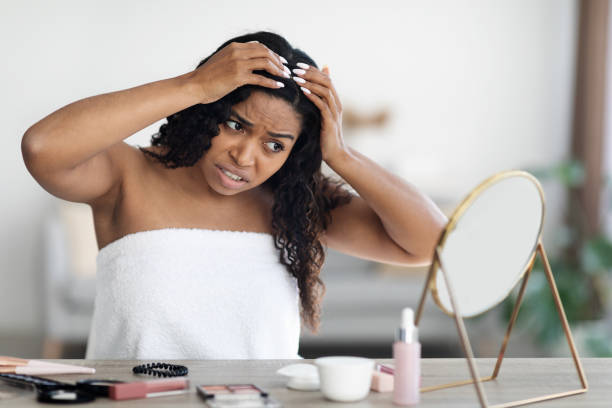by Ionel Jones
It’s normal to lose around 50 to 100 hairs per day, but how do you know when your hair shedding is normal or too much? With the mass amount of reasons for hair loss, it only makes sense to do a deeper dive into the subject of thinning hair.
World-renowned dermatologist and hair restoration surgeon Dr. Umar provides answers to a topic so many of us are concerned about.
Q: Why does hair thin?
A: Miniaturization Is one of the most common causes of hair thinning. In women who experience female pattern baldness, there is likely to be other variables that contribute to the condition besides genetics. Usually, this includes hormonal imbalances and environmental factors which exacerbate the interaction of their sensitive hair follicles with DHT, stress, pregnancy, certain medications, crash dieting, anemia, iron deficiency, use of chemical dyes, and relaxers have all been implicated in female hair loss.
Women will typically experience hair thinning on the top part of their scalp which may or may not spread to other regions. In women, because the hairline is often spared, mild to moderate thinning is easily camouflaged by the use of extensions, hair products, etc.
Hair thinning in women should be evaluated by a dermatologist with the objective of excluding treatable secondary causes such as thyroid disease, nutritional causes, medication, etc. A blood test is often part of the evaluation process.
In women of African descent, the most common cause of hair loss is traction alopecia which results from hair grooming practices that exert a sustained pulling force on the hair roots. Examples of such grooming practices include hair weaves, braiding, ponytails, etc.
In addition to changing your hairstyles to protect your hair, here’s how to regrow your hair:
Moisturize your hair.
One of the best things you can do to your hair is to keep it moisturized. Having adequate moisture encourages fast growth and protects hair from breakage and split ends.
Additionally, it keeps the hair looking bright and feeling soft. Before you can even start considering store-bought moisturizers make sure that you are already moisturizing the natural way; drinking enough water.
When it comes to moisturizing from the outside, try to do it every day. This ensures that your hair is always adequately hydrated. Some of the best ingredients for black hair moisturizers include olive oil, coconut oil, grape seed oil, and pure shea butter.
Protect your hair ends.
Every three to four months you should trim your hair. This gets rid of any split ends allowing your hair to continue growing properly without further damage. When trimming, you only need to cut about a 1/2 inch maybe a bit more depending on your hair.
To keep your ends in great condition, use protective hairstyles such as bans and not-so-tight braids. Letting hair fall freely exposes the ends to damage. At night wrap the hair in a silk scarf or sleep on a satin pillow. These little changes help a lot.
Air dry your hair.
After washing your hair, the best way to dry it is by rubbing it gently with a towel or letting it air-dry. Try to avoid using a blow dryer as the excess heat will weaken and damage your hair. If for any reason you have to use your blow dryer, use the coolest setting. You can also wrap the hair in a silk scarf and leave it to dry through the night.
Add protein treatments to your hair.
Protein treatments help in speeding up hair growth by nourishing it and making it stronger. Various types of protein treatments are made for different hair types. Protein packs are for regular use with people showing slight hair damage.
Light treatments are ideal for hair with a bit more damage. They often come in the form of a deep conditioner. Deep penetrating treatments are best for fairly damaged hair. Reconstructors are used to encourage quick growth in severely damaged hair.










